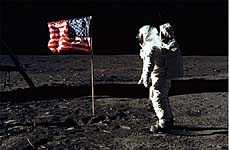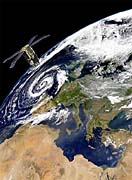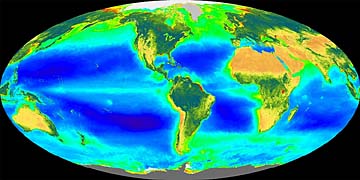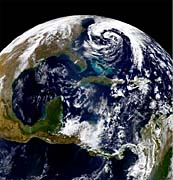From Sea to Shining Sea:
A Film Treatment by Paul Gasek and Gene Carl Feldman
Yet, something has been lost in the transition from manned to robotic exploration of the oceans. The biggest loss may be the inspiration brave human aquanauts impart to successive generations of aspiring explorers who dream of seeing new things and discovering new wonders.
NASA; images of satellites in orbit, satellite imagery of Earth.
Manned exploration of space has waned as well. Robotic spacecraft are cheaper to build, gather information as well or better than any human being, and pose no danger to human astronauts. Detractors of the manned Space Shuttle program argue that even the Shuttle is too expensive, too dangerous, and the well-known environment of low Earth orbit is not interesting or productive enough to justify the expense in astronauts’ lives and national treasure.

![]()

The irony is that while the robotic exploration of space and the oceans continues to produce dazzling new discoveries, somehow it doesn’t inspire the public’s imagination in the same way it did in the days when human beings went to the Moon and drifted deep in the Gulf Stream.
NASA/NOAA: satellite imagery of oceans, El Nino, Gulf Stream time lapse, etc.
The robotic eyes of remote-sensing satellites, like a new sensory organ for our species, orbit overhead, continuously scrutinizing the Earth. At a time when a burgeoning human population threatens to undo the Earth's natural balance and ecological equilibrium, space is the place from which we can most easily detect changes in our planet on a massive scale. We need this orbital perspective to better understand the ability - or inability - of the Earth to support life as a result of those changes.

![]()

![]()

Reprise images of Franklin; crew and drift dive
What those eyes see mostly from Earth orbit is the all-pervading blue of the vast global ocean. It is the last frontier on our planet, close at hand, critical to our survival, still unexplored, and still waiting for human beings to come and discover the wonders in its depths.

PREVIOUS PAGE | Page 21 |